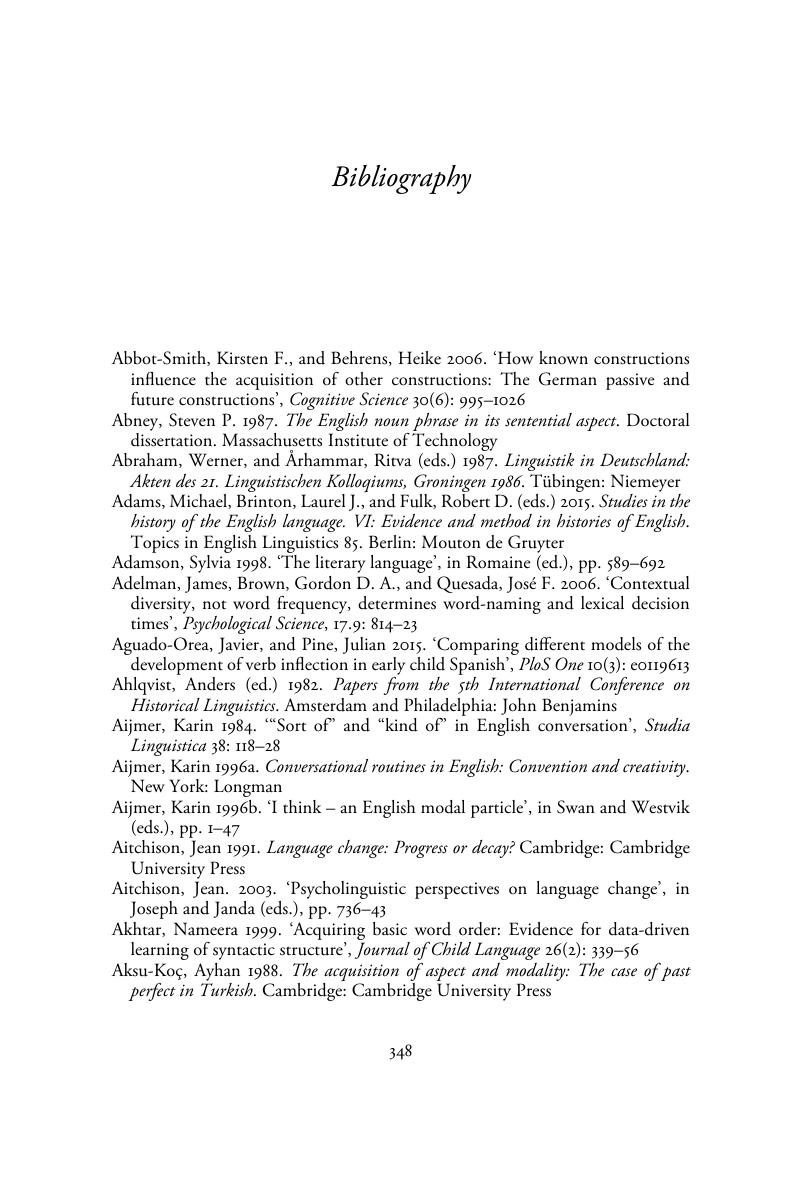Book contents
- The Changing English Language
- Studies in English Language
- The Changing English Language
- Copyright page
- Contents
- Figures
- Tables
- Contributors
- Acknowledgments
- Data Sources
- Chapter 1 Introduction: Language History Meets Psychology
- Part I Frequency
- Part II Salience
- Part III Chunking
- Part IV Priming
- Part V Analogy
- Part VI Ambiguity
- Part VII Acquisition and Transmission
- Bibliography
- Index
- References
Bibliography
Published online by Cambridge University Press: 13 July 2017
- The Changing English Language
- Studies in English Language
- The Changing English Language
- Copyright page
- Contents
- Figures
- Tables
- Contributors
- Acknowledgments
- Data Sources
- Chapter 1 Introduction: Language History Meets Psychology
- Part I Frequency
- Part II Salience
- Part III Chunking
- Part IV Priming
- Part V Analogy
- Part VI Ambiguity
- Part VII Acquisition and Transmission
- Bibliography
- Index
- References
Summary

- Type
- Chapter
- Information
- The Changing English LanguagePsycholinguistic Perspectives, pp. 348 - 406Publisher: Cambridge University PressPrint publication year: 2017

